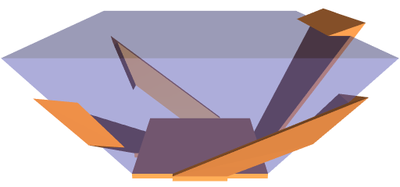
Fixtures for constraining the movement of parts have been extensively investigated in robotics, since they are essential for using robots in automated manufacturing. This paper deals with the design and optimized synthesis of a special type of fixtures, which we call snapping fixtures. Given a polyhedral workpiece \(P\) with \(n\) vertices and of constant genus, which we need to hold, a snapping fixture is a semi-rigid polyhedron \(G\), made of a palm and several fingers, such that when \(P\) and \(G\) are well separated, we can push \(P\) toward \(G\), slightly bending the fingers of \(G\) on the way (exploiting its mild flexibility), and obtain a configuration, where \(G\) is back in its original shape and \(P\) and \(G\) are inseparable as rigid bodies. We prove the minimal closure conditions under which such fixtures can hold parts, using Helly’s theorem. We then introduce an algorithm running in \(O(n^3)\) time that produces a snapping fixture, minimizing the number of fingers and optimizing additional objectives, if a snapping fixture exists. We also provide an efficient and robust implementation of a simpler version of the algorithm, which produces the fixture model to be 3D printed. We describe two applications with different optimization criteria: Fixtures to hold add-ons for drones, where we aim to make the fixture as lightweight as possible, and small-scale fixtures to hold precious stones in jewelry, where we aim to maximize the exposure of the stones, namely minimize the obscuring of the workpiece by the fixture.
